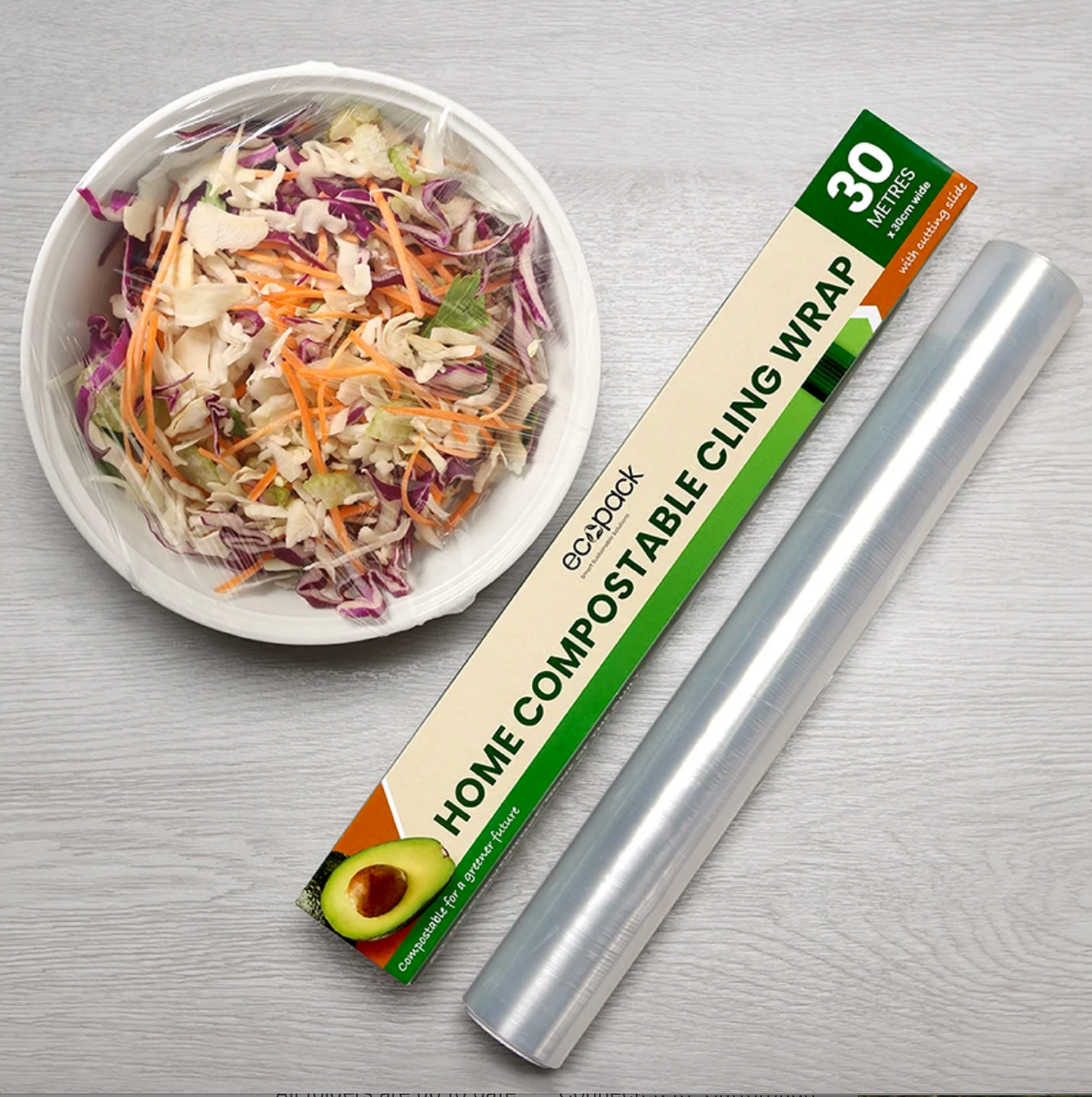
What is compostable cling wrap made from?
Customers have been wanting a compostable alternative to traditional plastic cling film for some time. But it’s been challenging to get this product right. We spent a good amount of time experimenting with different formulations and different packaging formats before bringing our Ecopack compostable cling wrap to market. And our diligence has paid off as it’s proving to be hugely popular!
So, what’s in it?
Our compostable cling film is made from two key ingredients: PLA and PBAT. The result of which is a product that is food and freezer safe and certified for home composting by Din Certco Home & Garden Composting 9P0020.
Let’s dig a little deeper and find out about these two ingredients…
PLA stands for polylactide, which is usually made from waste corn (it can also be made from cassava, sugarcane or sugar beet pulp). This bioplastic material has become popular due to the fact that it’s economically produced and made from renewable resources.
But the downside is that PLA takes a long time to break down; the degradation rate is very slow in ambient temperatures. It could not be certified “home compostable” (ironically not even banana skins, corn cobs or avocado skins could either) and that’s where PBAT comes in.
PBAT stands for polybutyrate adipate terephthalate. It has been given a bit of a bad rap because it is indeed derived from petrochemicals - and therefore is not renewable. But unfortunately it’s a necessary ingredient. PBAT is the binding agent that helps the film decompose – it’s incredibly biodegradable and leaves behind no toxic residues. PBAT isn’t a perfect solution but it’s the best solution we have currently.
Some may argue that PBAT is plastic. To be more precise, PBAT is a derivative of petroleum. Much in the same way that many shampoos contain ingredients derived from petroleum but are not considered “plastic”. None of our Ecopack products contain any polyethylene, which is what many would consider “traditional plastic”.
Rest assured research is going on all the time trying to find more bio-based ingredients - the ultimate would be to find a 100% bio-based, non-oil derived resin. For the time being the PLA + PBAT formulation is the best option we have. And it’s a pretty good solution!
Ecopack compostable cling wrap performs similarly to traditional plastic cling film, except that it's a bit "stickier" (not to mention that it’s also home compostable of course!). To help manage this stickier material, we’ve included a cutting slide in the box, which makes it easy to use. We recommend starting off a little more gently; handling this material is slightly different to conventional cling film. But much like did with compostable bin liners, you’ll get used to this new and improved material in no time. Enjoy.

